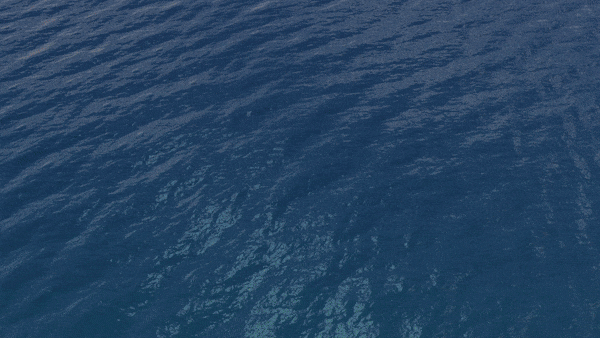
Abstract
The simulation and rendering of the surface of a deep ocean are typically carried by computing a mesh displacement through an Inverse Fast Fourier Transform (IFFT) of an animated ocean spectrum. This process generates a spatially periodic ocean displacement that can be tiled to pave a large ocean surface. However, this creates tiling artifacts for large oceans. This effect can be toned down by mixing the displacement with noise, which disturbs the appearance of the ocean, or by overlapping the result of several IFFT at different scales, which increases computation times, all while not fully removing the periodic aspect. We propose to instead use tiling and blending, a procedural generation algorithm popular for real-time texture synthesis, in order to generate variations of the mesh displacement. This method also enables us to author the direction of the waves using a flow map. We show that this method is especially fast and can create a fully aperiodic ocean with minimal downsides.
For scholarly quick dissemination, a preprint version of the paper is provided locally, even though we recommend to access the material through the official forums.